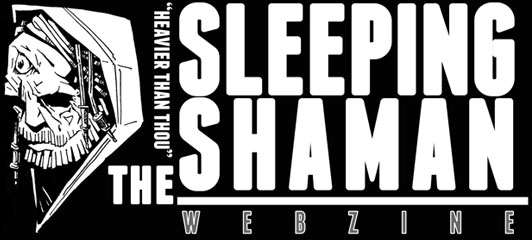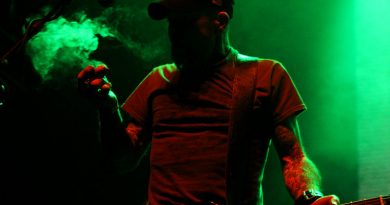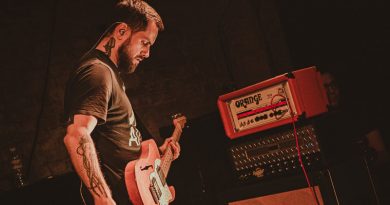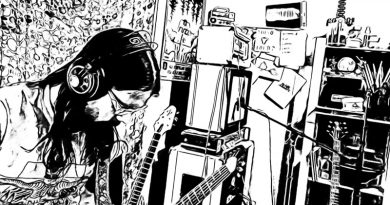Nadja: Interview With One Half Of The Drone Duo Aidan Baker
In his review of Nadja’s absolutely crushing Labyrinthine, fellow Shaman scribe Jamie Grimes described the album as feeling like ‘…four rooms of a haunted house, each one hosting a different ghost with a tale of their own to tell’, a very apt description. I caught up with guitarist/sometime drummer and fellow Canadian Aidan Baker via email to talk about collaboration, hard SF, and bringing vocals to the fore.
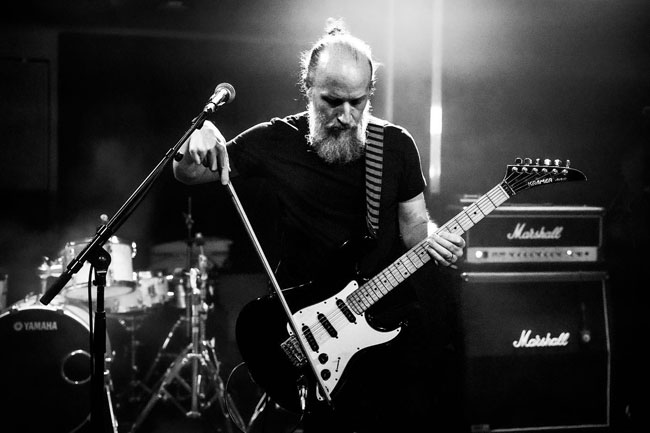
You collaborated with a different vocalist on each song on Labyrinthine. How did you decide who to approach?
We had talked with Alan Dubin – being long-time fans of his projects Khanate, OLD, and Gnaw – about doing something collaborative some years ago and that blossomed into the idea of doing an album with a different singer on each track. We have played together several times with Esben And The Witch, as they are also based in Berlin, and always appreciated Rachel Davies‘ vocals. We have not met either Dylan Walker or Lane Shi Otayonii in person, but we are fans of Full Of Hell and read or heard somewhere that Dylan liked our music, so reached out to see if he would be interested in working together. Lane‘s music, both solo and with Elizabeth Colour Wheel, we discovered through Bandcamp and simply wrote to her to see if she would be interested in working together.
we told the vocalists to do as they wished…
Did you direct the guest singers at all? For example, with lyrical ideas or concepts?
We gave each vocalist some text with phrases and imagery relating to the album’s themes but gave them free rein to edit and rearrange that text as they wanted. Beyond that, we told the vocalists to do as they wished and basically used the recordings they sent back as we received them, apart from minor edits and the odd bit of processing.
How did the collaborative process work?
As we were mostly working on this album during the pandemic, everything was recorded separately and shared online – also with Rachel, even though we were in the same city. The songs were in sketch form, just guitar and drum machine, when we first shared them with the singers, then we fleshed them out and re-arranged/edited slightly once we received the vocal part back.
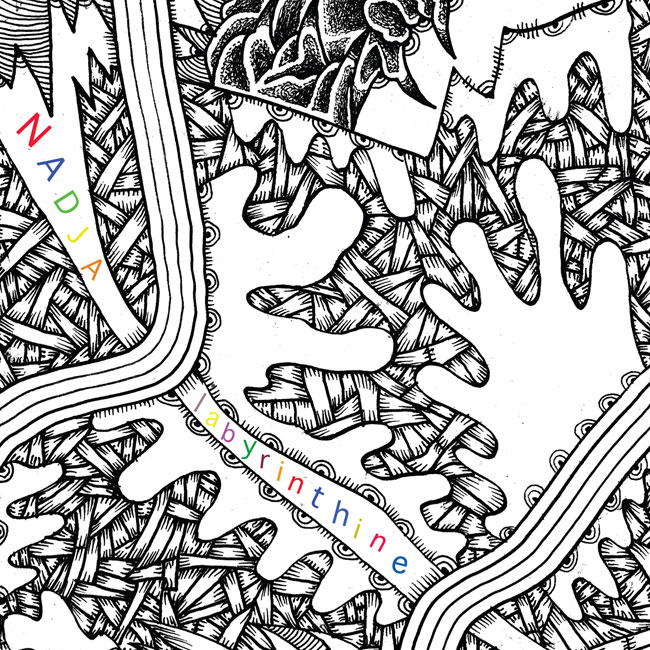
Who’s doing the throat singing on Necroausterity?
Dylan Walker from Full Of Hell does all the vocals on that track.
Nadja often gets tagged as doom/dream/whatever-gaze. Both Labyrinthine, and parts of your previous album, Luminous Rot, have a sense of propulsiveness that I wouldn’t necessarily associate with a shoegaze-affiliated album. Was this intentional? I guess another way to put it would be, what brought out the riffs?
Our songs usually have riffs at their core, but our inclination is to bury, or at least obscure, them with layers of noise of textural ambience. And while there are often vocal parts on our albums, we tend to bury them in the mix, treating them more as another instrument than a focal point for the song. It was tempting to similarly bathe the songs on Labyrinthine with ambience and noise, but we felt it would be a disservice to the vocalists – and also minimize the uniqueness of the album – so left the songs a little more minimal than we normally would. While this gave more prominence to the vocal parts, I suppose it also left more space for the riffs.
Our songs usually have riffs at their core, but our inclination is to bury, or at least obscure, them with layers of noise of textural ambience…
What was the ratio of writing to improvisation with these songs?
There was less improvisation in these songs, on our part, as usually the improvisational elements come out in the textural parts of our songs.
What were you listening to while writing?
If I recall correctly, Full Of Hell and Khanate, certainly. Maybe also Primitive Man, Disrotted, Cloud Rat, Napalm Death… and Diamanda Galas and Wendy Carlos…
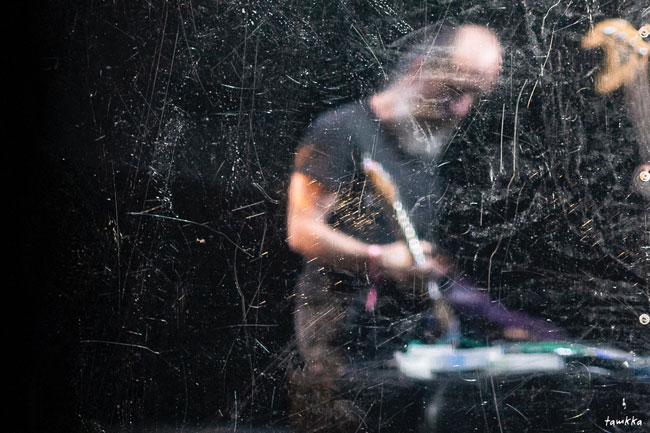
Luminous Rot was influenced by ‘first contact’ SF writing. Did that carry over into Labyrinthine?
Labyrinthine did have some literary influences, but not first contact SF. Primarily, it was influenced by Haruki Murakami’s Killing Commendatore and Ursula K. LeGuin’s The Tombs of Atuan, both of which explore themes of identity and monstrosity and feature subterranean wanderings through literal and figurative labyrinths. Both books are quite dark and violent, but they use the labyrinth motif as a means of self-discovery, of forging a personal identity in the face of adversity, defining one’s self as something other than monstrous.
Broken Spine Studios is really just wherever we happen to find space to set up our gear and record…
What does the recording setup at Broken Spine Studios look like?
We do not really have a home studio, per se, more just a recording set-up that can be portable, so Broken Spine Studios is really just wherever we happen to find space to set up our gear and record. At the moment, that space is a room in our flat in Berlin… or occasionally our rehearsal space where we can play loud, if we need volume for what we’re trying to capture.
You’re prolific collaborators. Are there any dream collaborations that have yet to manifest?
Well… I mentioned Diamanda Galas earlier – it would be very cool to play with her sometime!
Label: Broken Spine Productions
Band Links: Official | Facebook | Bandcamp | Instagram
Interviewed by: Neddal Ayad
